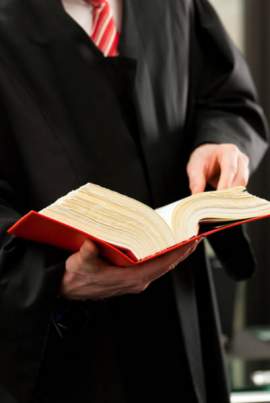
An Overview of Banks and Customers

Banks are businesses, although they are a somewhat different form of business than most. Banks hold the same kind of duty and responsibility towards their customers as do other businesses, but then banks owe additional responsibilities to customers thanks to their status as sometime agents for their customers.
Customers, however, in turn, hold responsibility to banks. Customers must pay into their accounts in order to be able to order the bank to pay out of them, which also means that customers are held responsible for the checks which they deposit. The interdependent relationship of customers and banks, then, is nuanced and important to examine.
Background
The relationship between banks and customers is complex. At first glance, the relationship would seem to be the same as exists in many other businesses in which the bank would be beholden to the customer. This is somewhat true, though banks have a different relationship to customers than do most businesses.
To a bank a customer is not simply a consumer whose rights should be protected in the act of consuming. To a bank, a customer is a principal who must be represented by the bank as the customer's agent. But banks can change their roles. Whereas most people might think of a bank in this role as an agent acting on behalf of the customer, banks can also assume the role of a creditor, in which they act as parties interested primarily in obtaining funds from debtors to settle debts.
In this role as creditors, banks are decidedly more focused on protecting themselves and not on serving customers. It is entirely possible that a bank might fill both roles with regard to a single customer as well, as the bank will be the agent protecting the customer's accounts and acting in the customer's interest with regard to those accounts, while also being the customer's creditor through a loan the customer may have taken out.
The relationship between these roles is complex, and understanding how each role comes into play is necessary for understanding how a bank fills those roles. For more information on the plurality of roles that a bank may play with regard to its customers, follow the link.
Creditor and Debtor
A debtor is a party that owes something, be it property or money, to a creditor due to a loan from that creditor. The relationship between creditor and debtor is a relationship between two inherently self-interested parties. The creditor is interested in ensuring that its loan is returned to it with whatever interest is due, while the debtor is interested in ensuring that its property is not taken unduly, that it can pay off the debt as it so chooses, or at least as it so chooses within the terms of the contract agreed upon for the original debt.
Any kind of law dealing with creditors and debtors, then, must balance the interests of the creditor against the interests of the debtor. Without law protecting debtors, creditors would be able to seize almost anything from debtors in order to pay off debts. Without law protecting creditors, debtors might be able to postpone their payments or otherwise avoid fulfilling their side of the contract.
The rules surrounding creditors and debtors, then, are designed to allow for the fair judgment on the repayment of debts, especially with regard to exactly what a creditor can claim from a debtor. A trial might give a creditor a lien against a property or asset of the debtor, thus allowing the creditor to seize that property in order to pay off the debt.
This creditor/debtor relationship matters significantly to the interactions between banks and their customers, as banks can give out loans to customers or can buy up the loans that consumers made with other companies. As such, banks often act in the creditor role. For more information on the relationship between creditors and debtors and exactly how each is protected under law, follow the link.
Agency and Contractual Relationship
Agency refers to a specific relationship between two parties, in which one party is the principal and one party is the agent. The agent is given authority by the principal to act on behalf of the principal with regard to a third party, whether that means making contracts or performing transactions.
The exact nature of any given instance of agency is defined by the contract that established this agency. An agent can have a different amount of power afforded to him, depending on exactly how the agent-principal relationship is established, and as such, might only be able to take certain actions on the behalf of his or her principal. The principal will be held liable and responsible for any actions the agent takes within the agent's allowed purview, while any actions that the agent takes outside of his or her allowed power will be left liable to the principal only.
One of the key elements in the relationship between any agent and principal is that the agent must be acting on the behalf of the principal in the principal's best interests. A bank, for example, acts as a payment agent on the behalf of its customers as it pays off the checks which they draw from accounts held by the bank.
As such, however, the bank must act in its customers' best interests. It cannot pay from the customers' accounts without their permission, nor can it give unauthorized parties access to the information available about a customer's account. To find out more about the relationship between an agent and a principal and how it is enforced under law, click the link.
Incompetence or Death of Customer
The relationship between a bank and a customer may be complicated by unpredictable circumstances of life. The primary fashion in which this sort of complication might arise would be if the customer of a bank gets into an accident of some kind, and is either killed or rendered incompetent in some fashion. For example, a customer might get into a car accident and, as a result, be put into a coma or even a persistent vegetative state. In such an instance, the question arises as to exactly what duties the bank has towards the customer and the customer's account.
As each account is likely tied to a single customer, then if that customer meets such a fate, the bank would no longer be serving anyone as an agent with regard to that account. For the bank to then make payments from that account for drafts issued by the customer prior to the accident might seem wrong, as the bank might be acting without authority granted from the agent in such an instance.
The Uniform Commercial Code provides for such circumstances, however, by affording to the bank a certain amount of protection while it continues to pay off drafts made by the customer prior to the accident. The bank is protected greatly if it does not have knowledge of the customer's death or incompetency, as the bank cannot be held for wrongdoing if it is acting without such information, simply because the accident has happened recently.
Even if the bank is given such information, it is protected for a certain amount of time in order to fulfill payment on checks drawn from the account prior to the customer's death. For more information on how the incompetency or death of the customer would affect the bank in its duties, follow the link.
Stop Payment
A stop payment order is issued by a customer to a bank in order to prevent the bank from issuing payment from the customer's account for a given check. The stop payment order will sometimes cost some amount of money to issue, but is generally worth it, as a stop payment order is most often issued in situations in which failing to issue the order might result in the check being cashed illegitimately by an unintended party. If, for instance, a check is stolen or lost, then issuing a stop payment order on that check is necessary in order to prevent the check from being misused by the thief or by the finder of the check.
A stop payment order is not automatically effective, however, as there are some requirements which the issuer of the order must fulfill. For example, the order must be filed with the bank with enough time for the bank to take action.
As unfortunate as it may be, if the check in question is lost outside of the bank and someone managed to pick it up and cash it at the same time that the drawer is issuing a stop payment order, then the bank cannot be held accountable for the check, as the order will not have been issued with enough time for the bank to take appropriate action. If, on the other hand, the order is issued properly with enough time and the bank still makes payment on the check in question, then the bank would be liable to repay the customer.
A stop payment order is not permanently effective, as it will expire in six months of the date of issuance, but it can be renewed, and other provisions of the Uniform Commercial Code would likely help to protect the drawer. To find out more about stop payment orders and how they are issued, click the link.
Forged Signature on Checks
One of the problems of the use of checks is fraud. Since most of the elements of a check used to validate that check are forms of signature, then forging those signatures would allow the forger to submit checks for payment when he or she would actually have no legal right to do so. This is an especially dangerous practice in cases where an individual has lost his or her checkbook. In such a case, a forger could begin writing checks and signing them with a forged signature, thereby making payments out of the victim's account.
The responsibilities of a bank towards customers with regard to such forgery cases are quite important. In general, the victim of a fraudulently drawn check will never be held liable for that check. It is the bank's responsibility to examine the check and notice whether or not it appears to bear a forgery. If the bank accepts the check, then the bank accepts liability for the check's forged nature. This means that if the bank does pay out of the account of the supposed drawer, then it would have to restore that amount to the drawer at a loss to itself.
The bank would, however, be able to sue the forger and seek restitution that way. Should the customer have knowledge that would alert the bank to the possibility of forged checks, then the customer has a responsibility to alert the bank as soon as possible.
The customer cannot be held accountable for not informing the bank in time to stop it from making a payment, but should the customer simply refuse to alert the bank until after the bank has issued payment on a forged check, then the customer might be held somewhat accountable, though not for the check itself. To find out more information about the liability of forged checks and where it lies, follow the link.
Forged Endorsements on Checks
Forged endorsements are slightly different than forged signatures in that a check with a forged signature would never have been legitimate. A check with a forged endorsement, on the other hand, is invalidated thanks to the forged endorsement, but it might otherwise appear to have been a legitimate check. The forged endorsement might not even be the endorsement of the initially intended payee. It could be the endorsement of a payee further along who forged an endorsement.
Regardless, however, the check would still be invalidated, and if it was paid, liability would fall on one of the involved parties. Like cases of forged drawers' signatures, however, liability does not generally fall on the drawer and it absolutely would not fall on the payee whose endorsement was forged.
If the drawee bank paid the check with a forged endorsement, then that bank would be liable to the account from which funds were drawn, but that bank might then in turn be able to pursue a case against the bank into which the forged check was deposited. This is because a bank accepting a check with a forged endorsement for deposit and then seeking payment from the drawer's bank would be making a warranty that it had a right to do so.
With such a forged check, however, the depository bank would have no such right and would, therefore, stand in violation of its warranty. The result is that the depository bank would likely be the liable party. Of course, the depository bank could still seek remuneration from the forger him or herself, as ultimately the forger is always the liable party. For more on forged endorsements on checks and how to determine liability or responsibility in such cases, click the link.
NEXT: An Overview of Business Bank Accounts





















